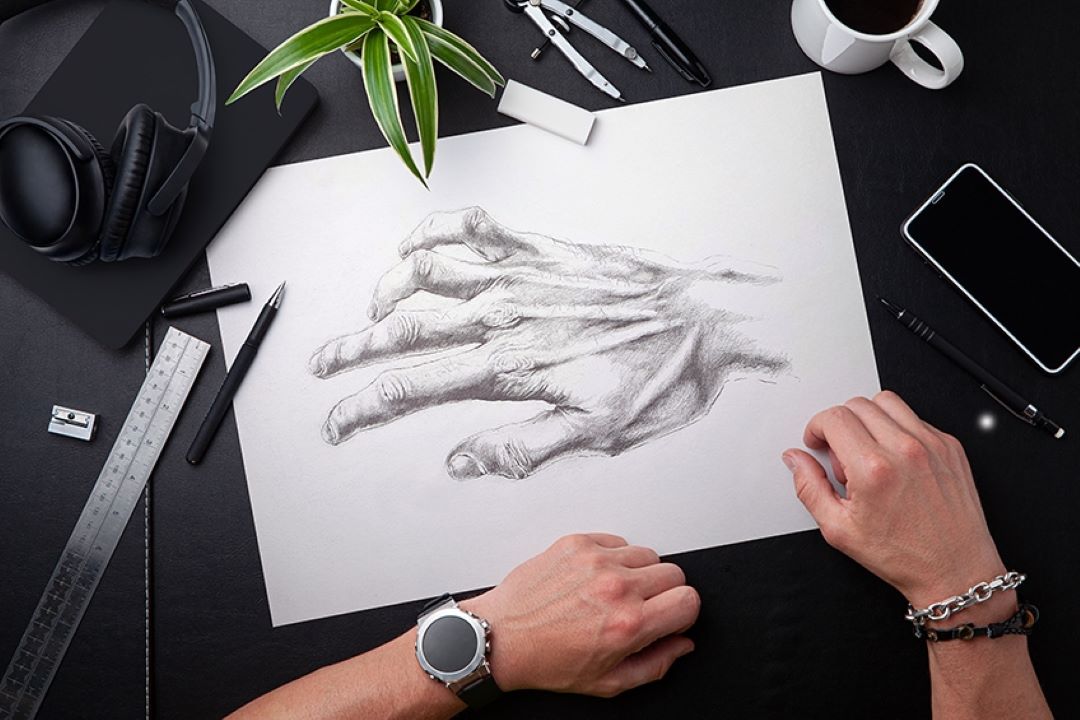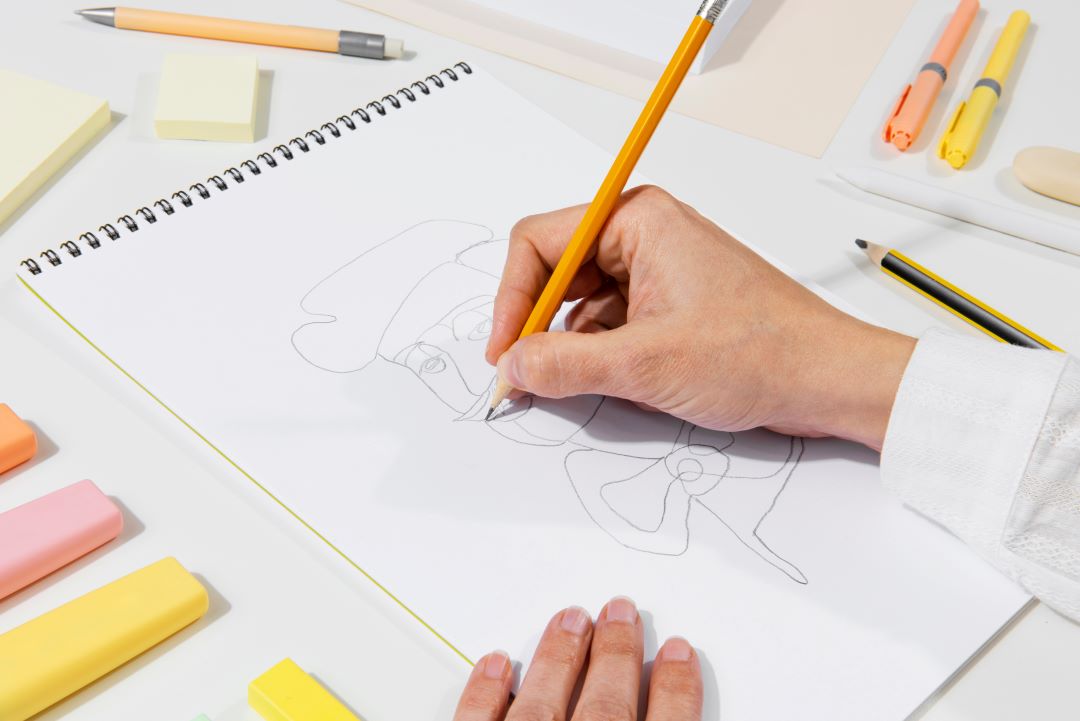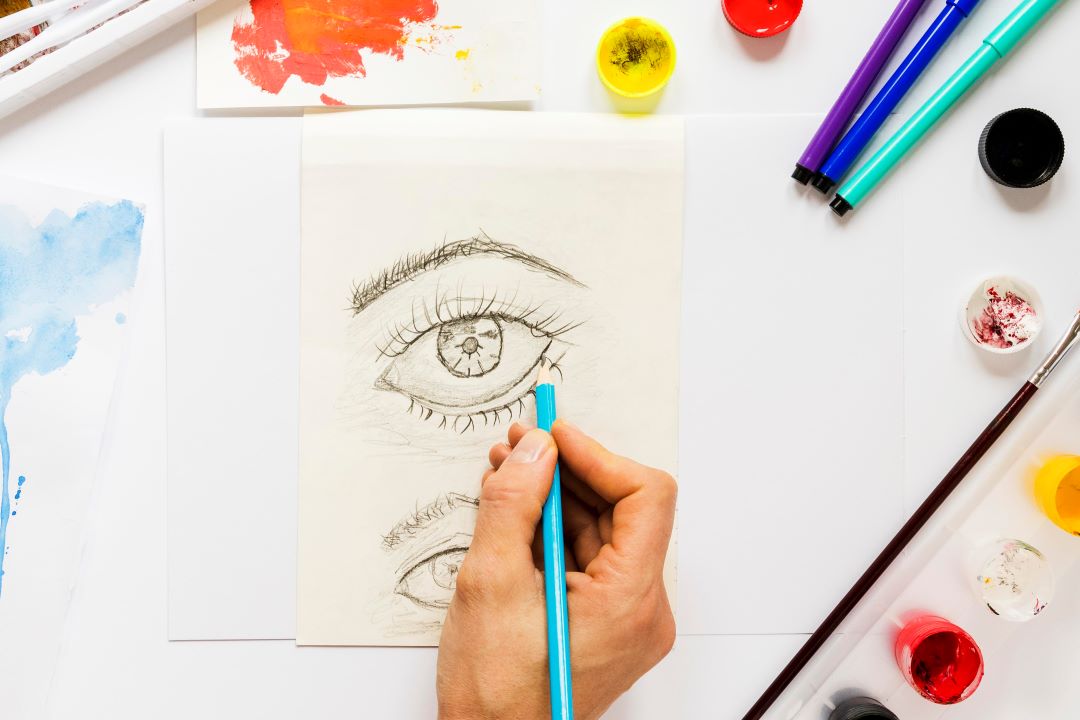How to draw a mouth?
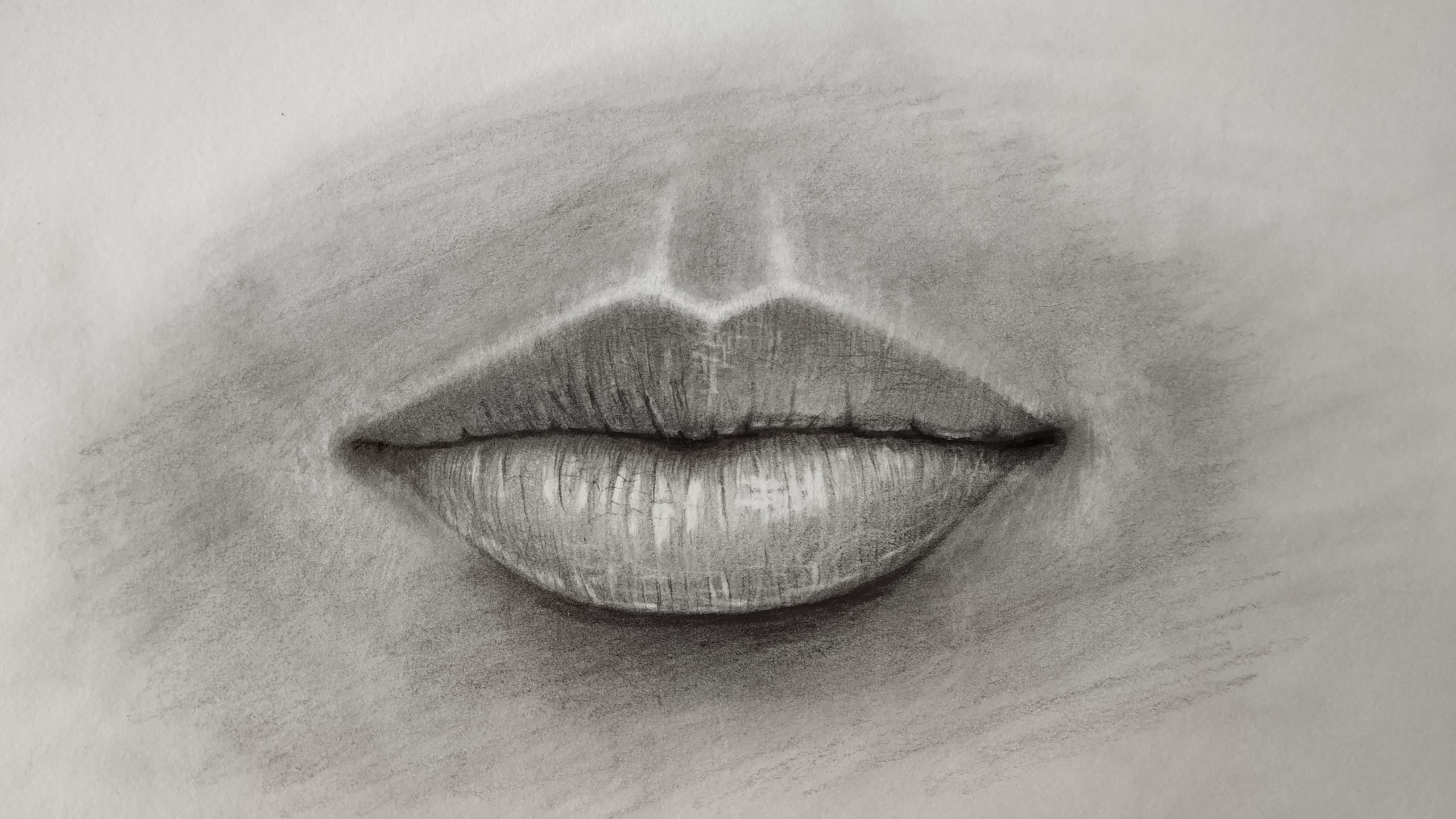
How to draw a mouth?
How to draw a mouth?
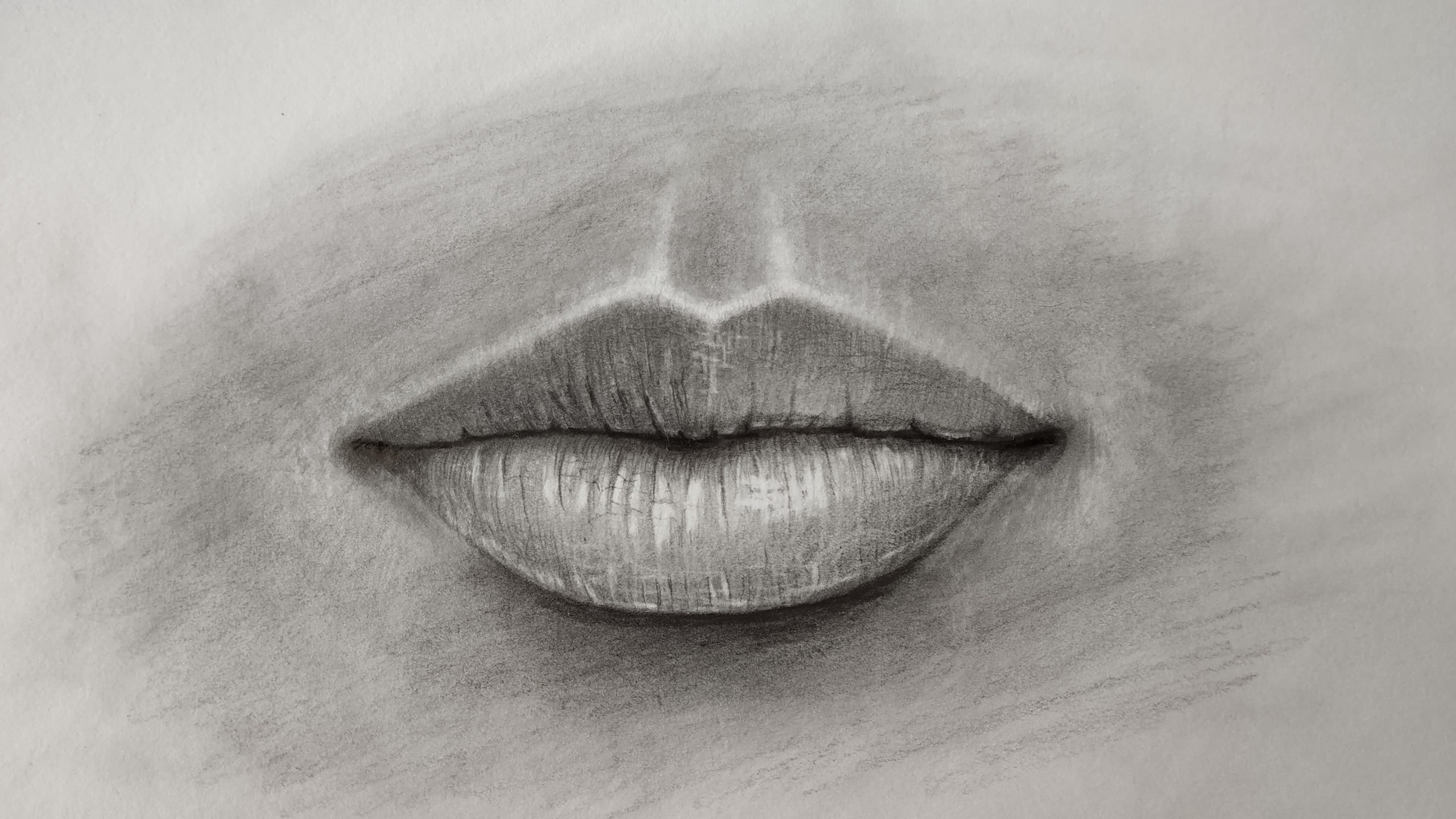
To draw a mouth, start by thinking about it as a sphere to understand its volume and depth, recognizing that it is a cavity containing important elements such as the teeth, tongue, and gums.
Consider that the thickness, width, and length of the lips will vary depending on the character you want to design.
Focus on key features like the Cupid’s bow, the commissures where the upper and lower lips connect, the philtrum connecting the nose to the mouth, the central tubercles beneath the Cupid’s bow, as well as the upper and lower lips themselves.
Different mouth and lip shapes depend largely on how you shape the Cupid’s bow, whether you widen or narrow the mouth, and how you position these mouth base drawing features to convey various expressions and emotions.
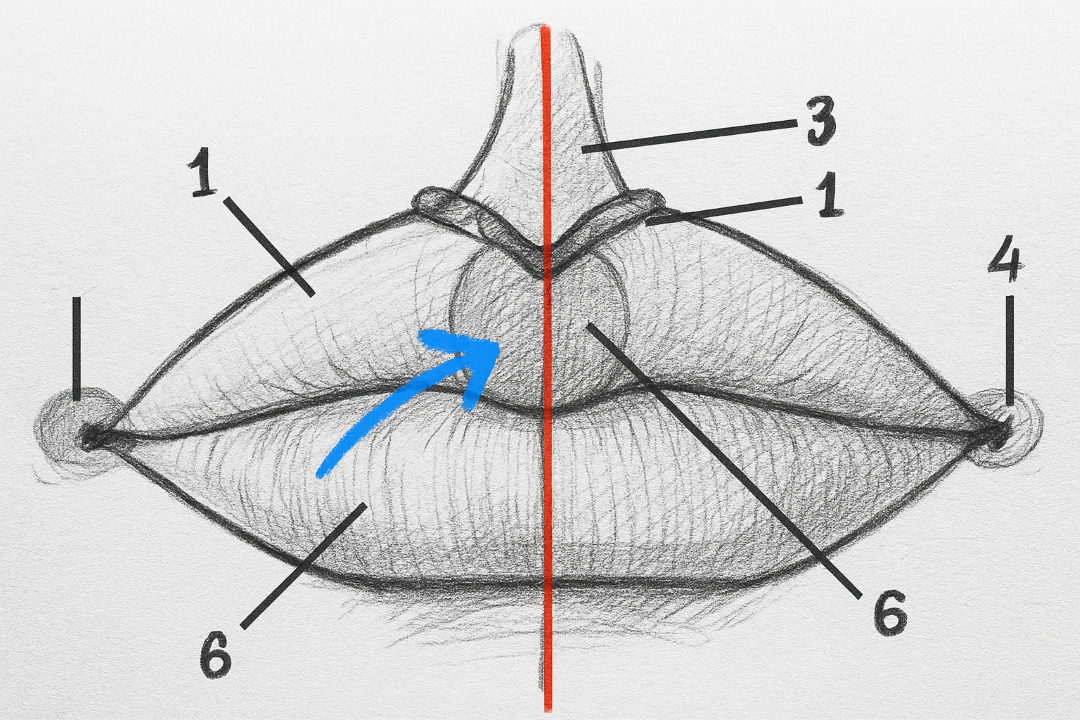
How to draw a mouth? Step by step
You draw a mouth by first marking helpful guidelines, such as a vertical line through the middle of the face and key points that define the shape and proportions of the lips and mouth.
This method allows you to create different shapes and styles of lips, from realistic lips to stylized versions, by carefully considering the relationship between the upper lip, bottom lip, and the nose.
Paying attention to the left side and right side symmetry is important to maintain balance in the drawing. Shading plays a vital role in adding depth and dimension, while adding texture enhances the natural appearance of the lips.
By studying various draw mouth step by step examples and practicing how to draw lips in different styles, you can develop your own approach to drawing mouths that suit different characters and expressions.
This process involves understanding the subtle curves, the cupid's bow, and the way light interacts with the lips to create highlights and shadows, ultimately helping you draw lips that look lifelike and expressive.
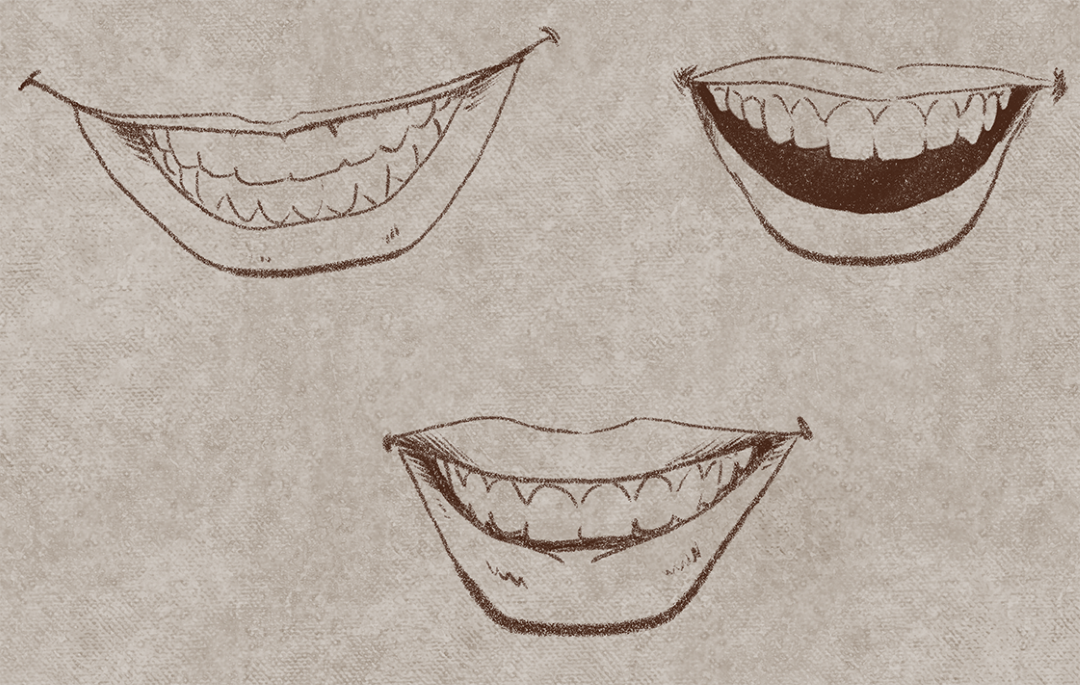
How to draw a mouth with teeth?
To draw a mouth with teeth, start by drawing a cylinder to establish the roundness and volume of the mouth. This cylinder helps you visualize the three-dimensional form and curvature as the lips wrap around the teeth and the inside of the mouth.
When drawing a mouth with teeth, remember that at most you will see 5-6 teeth on each side, depending on the angle and expression.
Think about teeth not as flat shapes but as three-dimensional forms that curve gently toward the back of the mouth.
This curvature affects how the teeth appear from different perspectives, especially when the mouth is open or smiling.
For example, a half smile will show fewer teeth than a full smile, and the number of visible teeth directly influences the expression's intensity. Pay attention to how the thickness of the lips changes during different expressions.

When smiling, the upper and lower lips stretch and often become narrower, especially near the edges, while the middle part may retain some fullness. This variation in lip thickness adds realism and emotion to your drawing.
To draw lips easily with teeth, start by marking the middle line where the lips meet and then sketch the teeth shapes behind it, keeping their volume and perspective in mind. Use soft, curved lines to define the edges of the lips, avoiding harsh outlines to maintain a natural look.
When aiming for realistic lips with teeth, study references to observe subtle details such as the slight translucency of the lips near the edges, the shadows cast by the teeth, and the tongue's position inside the mouth.
The tongue often rests behind the teeth and can be partially visible in an open human mouth, adding depth and realism. Experiment with different shapes and styles to develop your own style of drawing mouths with teeth.
For instance, the left side of the mouth may show slightly different curvature or teeth visibility than the right side, depending on the expression and head angle. Incorporating these small asymmetries can make your human mouth drawings more dynamic and lifelike.
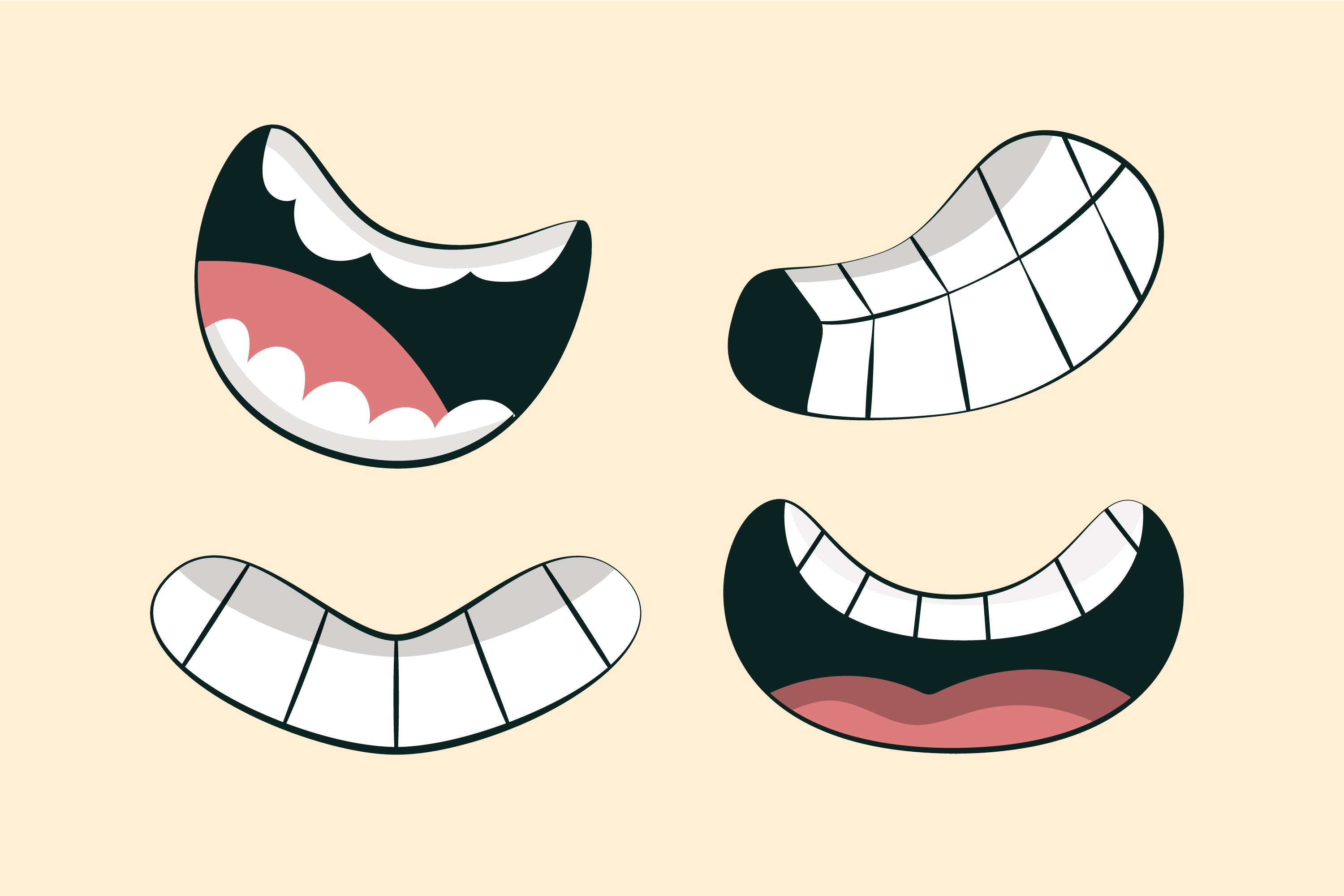
How to draw an anime mouth?
To draw an anime mouth, begin drawing a circle to represent the head and mark the center with a vertical line. This will help you maintain symmetry as you create the facial features.
Next, draw a horizontal line slightly below the center to position the mouth in relation to the nose and other elements of the face. When drawing an anime mouth girl with pencil, focus on the delicate balance between the upper lip, bottom lip, and the space between them.
Start by sketching the upper lip with a smooth, slightly curved line that forms a subtle cupid's bow at the middle. Notice that the upper lip in anime styles is often narrow and less detailed compared to realistic lips, but its shape is crucial to convey expression.
The bottom lip should be rounder and fuller, connecting smoothly to the outer edges of the mouth. Use gentle shading to represent the volume and texture of the lips, paying close attention to the light source, which is often imagined coming from the top right.
This will help you add shadows and highlights that give the lips a three-dimensional appearance.
As you draw lips in different styles, remember that the proportions and shapes can vary significantly. Some anime mouths are simple lines, while others include more detailed upper and lower lips with shading to indicate depth.
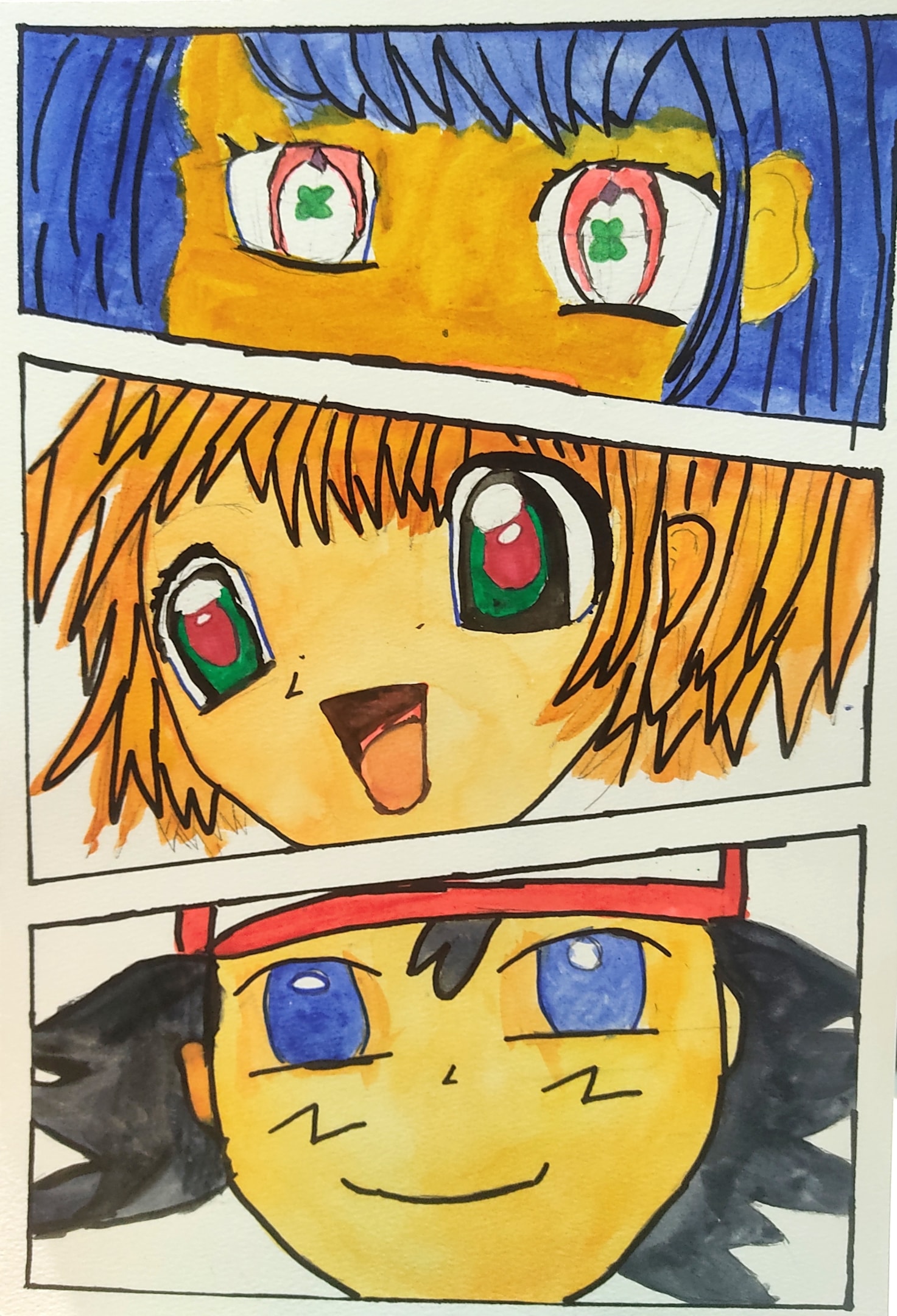
To create a complete and expressive mouth, connect the corners carefully to the rest of the face, ensuring the distance between the mouth and nose is proportionate to the head size.
When drawing the face around the mouth, use soft lines to define the cheeks and chin, keeping the edges smooth and natural.
The nose is typically simplified in anime art but should be positioned above the mouth with a slight indication of nostrils or a subtle shadow to represent its shape. Imagine the tongue and teeth if the mouth is open, but keep these elements minimal to maintain the stylized look.
This method allows you to draw lips that fit seamlessly into the anime face, balancing between simplicity and detail.
Use a vertical line through the center of the mouth to keep the left and right sides symmetrical, and vary the thickness and curvature of the upper and lower lips to suit your character's expression and personality.
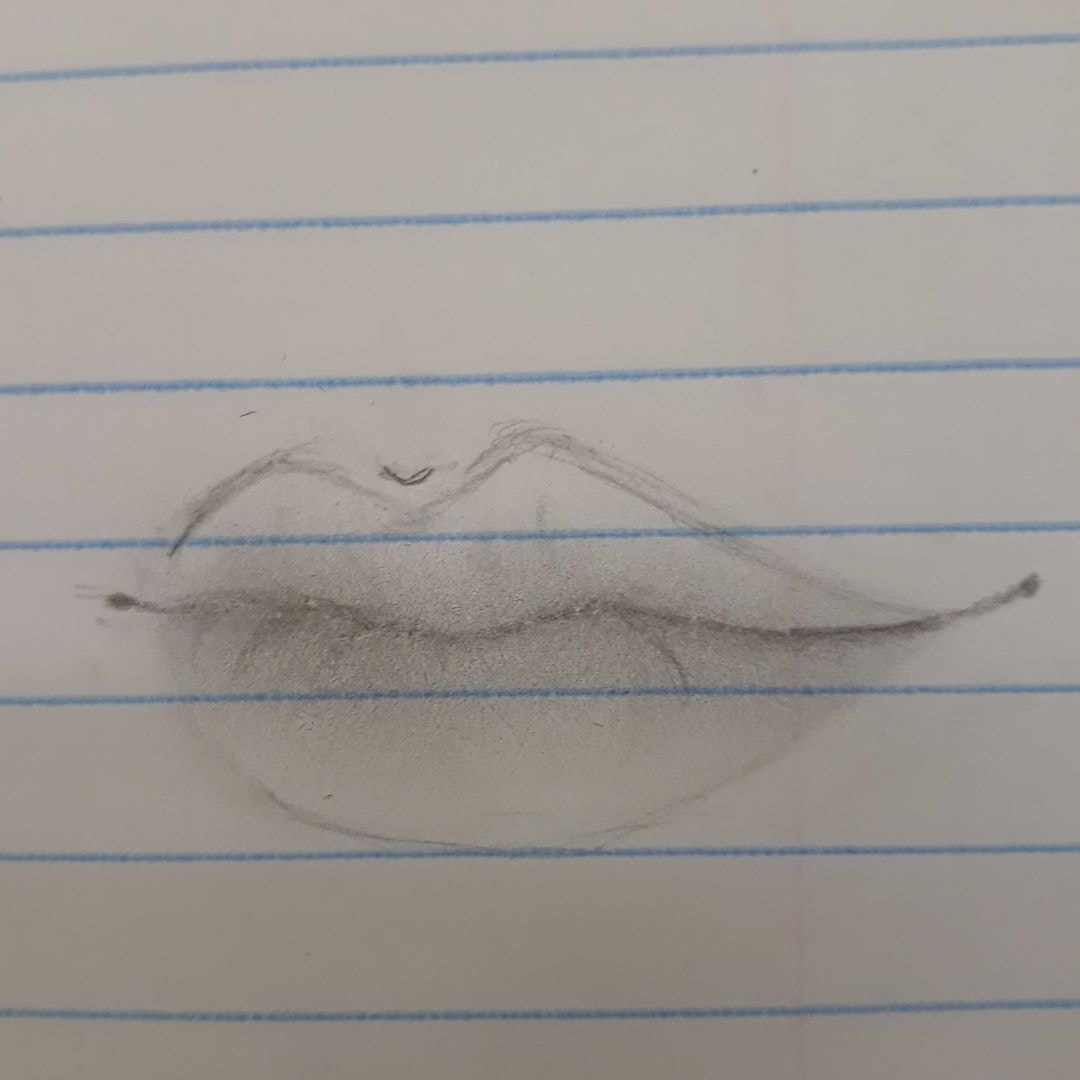
How to draw juicy lips?
To draw juicy lips, begin with a soft curve for the top lip and a wider, rounder curve for the bottom lip. The top lip will have a pronounced cupid's bow shape, which serves as a helpful point to mark the center and create symmetry with a vertical line.
The bottom lip should be fuller than the top lip, gently connecting at the corners with slightly curved lines to define the edges of the mouth. Notice the difference in proportions between the upper and lower lips, as this contributes to the overall volume and natural look.
Next, closely observe the distance between the lips and other elements of the face, such as the nose and tongue, as these relationships affect the mouth's placement on the head.
Use smooth shading techniques around the lips, especially around the corners and the center of the bottom lip, to represent the soft texture and create the illusion of fullness.
Lightly shade the area beneath the lower lip to suggest depth and volume, imagining a light source coming from the top right or another direction to guide your shadows.
To enhance the juicy appearance, add highlights to the middle of the bottom lip and along the upper lip's cupid's bow.
You can use a white gel pen or pencil to create small, delicate highlights that catch the light naturally. Applying gloss or a transparent layer over the lips further enhances the juiciness and adds a realistic shine.
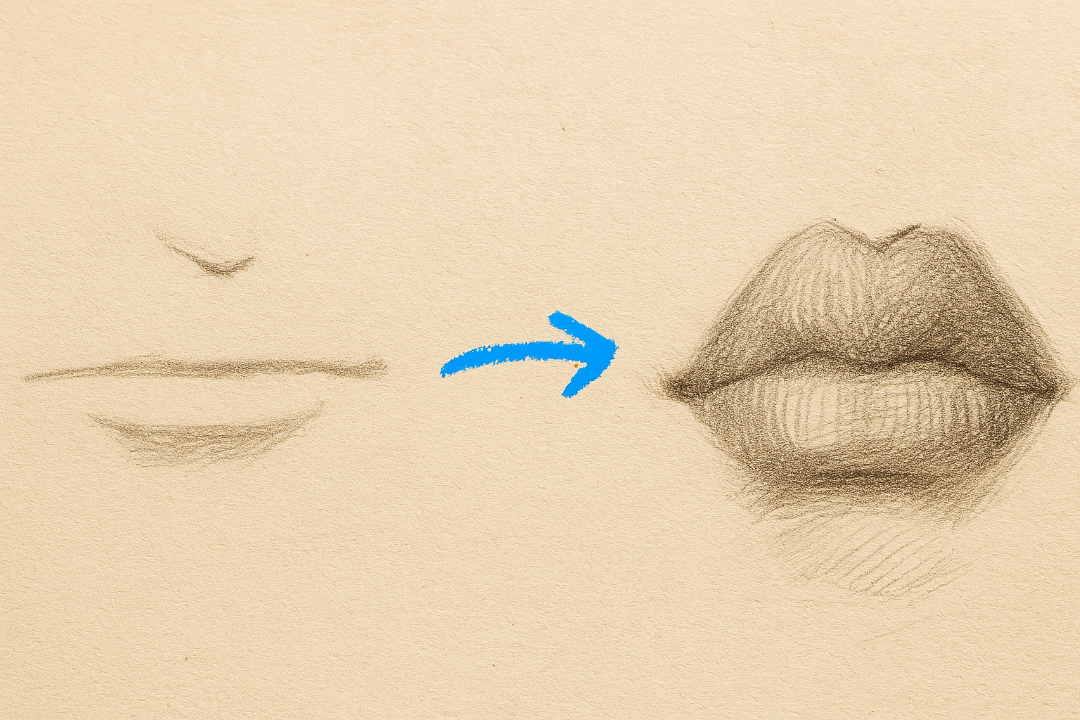
How to draw a masculine mouth?
For beginners, you can draw lips easily by first drawing a long isosceles triangle. When drawing a masculine mouth, keep in mind that the male mouth generally appears flatter and less curvy compared to the female mouth, which is more defined and round.
The upper lip in a male mouth is only lightly defined; the only real line work added at this stage is a light vertical line to mark the mid-point on the upper lip, helping to maintain symmetry and balance.
Shading should be left very light, as male lips are not fully outlined like female lips. Instead, the shading primarily represents the thickness of the lower lip by indicating the shadow just under it.
The male lower lip is not very defined, so avoid heavy lines around the outer edges. When drawing from the side, focus on the thickness of the lips — male lips tend to be narrower and less voluminous than female lips.
Another important point to notice is the distance between the nose and the upper lip, which is smaller in males. This difference in proportions affects how the mouth connects with other elements of the face, such as the nose and chin.
To create a realistic masculine mouth, closely observe these proportions and vary the shading slightly to represent volume without overemphasizing texture.
Use a light source, such as one coming from the top right, to guide your shading and shadows, ensuring the lips appear natural and smooth.
The corners of the mouth and the cupid's bow on the upper lip should be subtle, with soft edges rather than sharp lines. Imagine the lips as part of the whole head structure, where the lips connect smoothly to the surrounding skin and other facial features.
Both hands and mouths play a key role in expressing feeling—mastering how to draw them will greatly enhance the life and personality of your characters. Learn how to draw hands here!
How to draw lips easily for beginners?
For beginners, you can draw lips easily by first drawing a long isosceles triangle. Partway down the triangle, mark a curve similar to a "u" shape, and then draw a horizontal line between this curve and the base of the triangle.
The length of this horizontal line is important: the longer it is, the wider the lips will appear, while a shorter line will create more plump lips.
Next, draw a bow shape to represent the cupid's bow on the upper lip, paying close attention to the proportions and smoothness of the lines. Then, sketch the lower lip by drawing a curved line that completes the shape of the mouth.
Deciding on the light direction is a helpful step to add volume and realism to your drawing. Imagine a light source coming from the top right, for example, and use shading and shadow to represent how light falls on the upper and lower lips.
Shade the top lip and bottom lip accordingly, varying the intensity to show the difference in volume and texture. Adding lip wrinkles with slightly curved lines will add texture and make the lips look more natural.
To blend the bottom lip smoothly, use a soft or kneaded eraser to clean up highlights and soften edges, enhancing the overall three-dimensional effect.
Repeat these shading and blending steps on the upper lip, making sure to closely observe the corners and edges of the lips, as these details make a big difference in the final look.
Use a vertical line down the center to help maintain symmetry and balance between the left and right sides of the lips. Remember to consider the distance between the lips and other facial features like the nose and tongue, which may be visible in an open mouth.
Understanding how the nose and mouth align and interact can help you achieve a more balanced and realistic facial expression. Check out this easy guide on how to draw a nose here.

